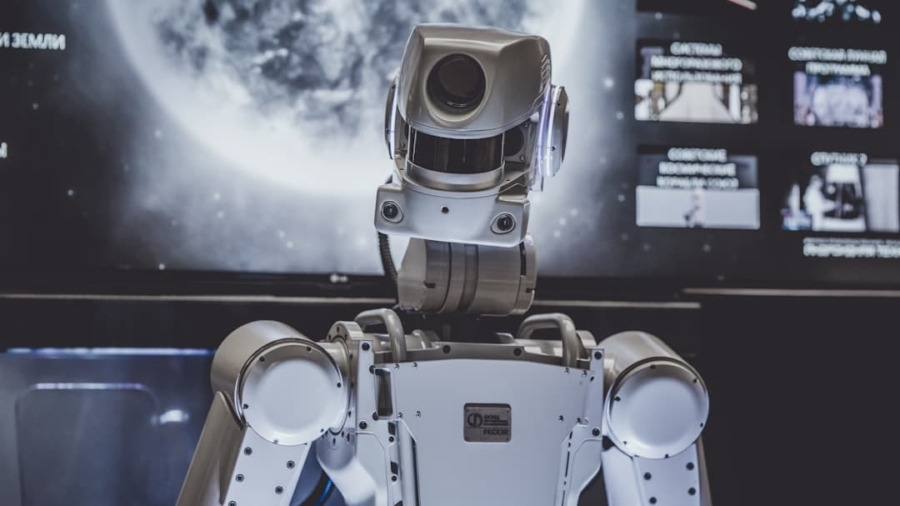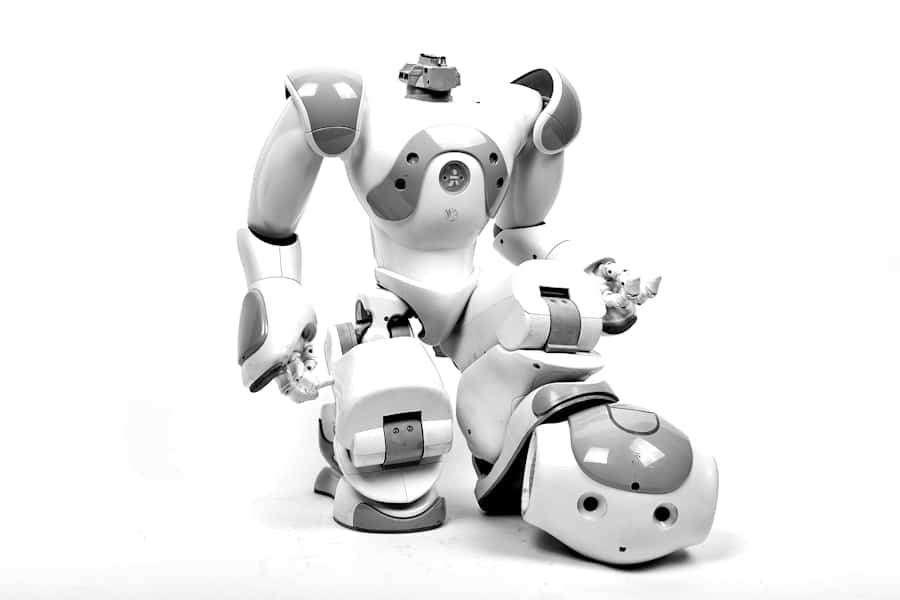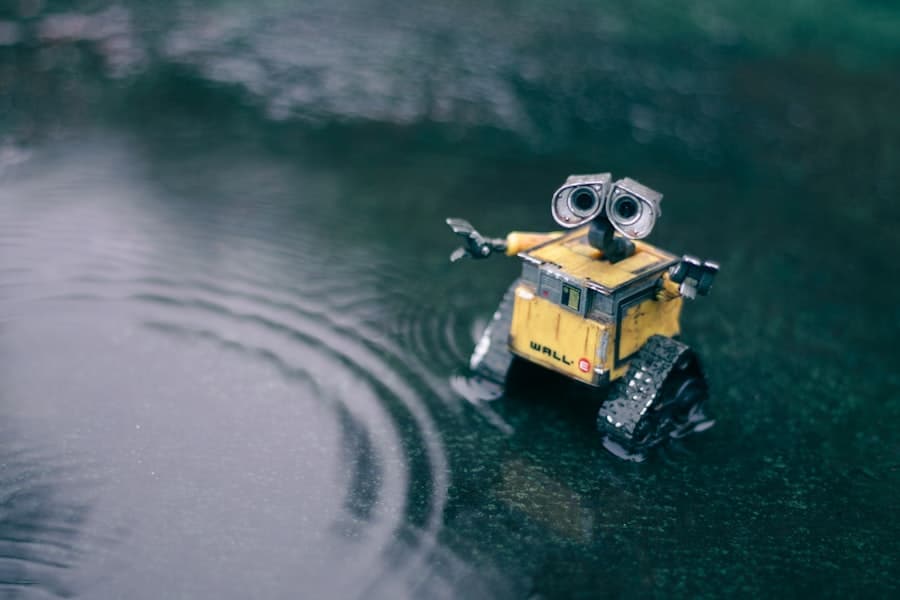The integration of artificial intelligence (AI) into industrial robotics has revolutionized the manufacturing landscape, ushering in an era characterized by unprecedented efficiency and precision. AI models, which encompass a range of algorithms and machine learning techniques, empower robots to perform complex tasks with a level of accuracy that was previously unattainable. This transformation is not merely a technological upgrade; it represents a fundamental shift in how industries approach production, quality assurance, and operational efficiency.
As industries strive to meet the demands of an increasingly competitive market, the adoption of AI-driven robotics has become essential. The evolution of AI models in industrial robotics can be traced back to the early days of automation, where robots were primarily programmed for repetitive tasks. However, with advancements in machine learning and data analytics, modern AI models enable robots to learn from their environments, adapt to new situations, and optimize their performance over time.
This capability is particularly crucial in sectors such as automotive manufacturing, electronics assembly, and food processing, where precision and speed are paramount. As we delve deeper into the role of AI in enhancing precision within industrial robotics, it becomes evident that these models are not just tools; they are integral components of a smart manufacturing ecosystem.
Key Takeaways
- AI models play a crucial role in improving precision and efficiency in industrial robotics.
- AI models analyze data to enhance robot precision by identifying patterns and making real-time adjustments.
- The impact of AI models on quality control in industrial robotics is significant, leading to higher product quality and reduced errors.
- Case studies demonstrate the successful implementation of AI models in industrial robotics, resulting in improved productivity and cost savings.
- Overcoming challenges in implementing AI models in industrial robotics is essential for realizing the full potential of AI in this field.
The Role of AI in Improving Precision in Industrial Robotics
Overcoming Limitations of Traditional Robotic Systems
Traditional robotic systems relied on pre-defined programming, which limited their ability to adapt to variations in the production environment. In contrast, AI models leverage real-time data and advanced algorithms to refine their operations continuously, enabling industrial robots to execute tasks with remarkable accuracy.
Learning from Mistakes and Improving Performance
Through techniques such as reinforcement learning, robots can learn from their mistakes and improve their performance over time, leading to a significant reduction in errors during manufacturing processes. This level of adaptability not only improves precision but also increases overall productivity by minimizing downtime caused by errors.
Advanced Sensor Integration and Informed Decision-Making
AI enhances precision by facilitating advanced sensor integration. Modern industrial robots are equipped with a variety of sensors that collect data on their surroundings, including visual inputs from cameras and tactile feedback from touch sensors. AI models process this data to make informed decisions about movements and actions, ensuring accurate placement and minimizing errors.
How AI Models Analyze Data to Enhance Robot Precision
The ability of AI models to analyze vast amounts of data is a cornerstone of their effectiveness in enhancing robot precision. Data analytics allows robots to interpret complex patterns and make decisions based on historical performance metrics. For instance, machine learning algorithms can be trained on datasets that include various operational scenarios, enabling robots to predict outcomes based on past experiences.
This predictive capability is particularly valuable in dynamic environments where conditions can change rapidly. One practical application of data analysis in improving precision is through predictive maintenance. By continuously monitoring the performance of robotic systems and analyzing data from sensors, AI models can identify potential issues before they lead to failures.
For example, if a robot’s motor shows signs of wear based on vibration data, the AI model can alert operators to perform maintenance before a breakdown occurs. This proactive approach not only enhances the precision of operations by ensuring that robots function optimally but also extends the lifespan of the equipment, ultimately reducing costs associated with unplanned downtime.
The Impact of AI Models on Quality Control in Industrial Robotics
Quality control is a critical aspect of manufacturing that directly influences product reliability and customer satisfaction. AI models have transformed traditional quality control processes by introducing automation and advanced analytics that enhance inspection accuracy. In conventional settings, quality control often relied on manual inspections, which are prone to human error and inconsistencies.
However, with the integration of AI-driven robotics, manufacturers can achieve higher levels of quality assurance through automated inspection systems. AI models equipped with computer vision capabilities can analyze products at high speeds and with exceptional accuracy. For instance, in the electronics industry, AI-powered robots can inspect circuit boards for defects such as soldering errors or component misalignments.
By utilizing deep learning algorithms trained on thousands of images of both defective and non-defective products, these systems can identify anomalies that may escape human inspectors. This not only improves the precision of quality control but also accelerates the inspection process, allowing manufacturers to maintain high throughput while ensuring product integrity.
Case Studies: AI Models in Action in Industrial Robotics
Several industries have successfully implemented AI models in their robotic systems, showcasing the transformative impact on precision and efficiency. One notable case study is that of automotive manufacturing giant BMW. The company has integrated AI-driven robots into its assembly lines to enhance precision in tasks such as welding and painting.
By employing machine learning algorithms that analyze real-time data from sensors and cameras, BMW’s robots can adjust their operations dynamically to account for variations in component alignment or environmental conditions.
Another compelling example comes from the food processing industry, where companies like Tyson Foods have adopted AI models for robotic sorting and packaging.
In this context, AI-powered robots utilize computer vision to identify and sort different types of meat products based on size and quality. By analyzing visual data at high speeds, these robots can ensure that only products meeting specific quality standards are packaged for distribution. This application not only enhances precision but also streamlines operations, allowing Tyson Foods to respond more effectively to market demands while maintaining high standards of food safety.
Overcoming Challenges in Implementing AI Models in Industrial Robotics
Despite the numerous benefits associated with integrating AI models into industrial robotics, several challenges must be addressed for successful implementation.
Upgrading existing robotic systems to incorporate AI capabilities often requires significant financial resources for hardware upgrades, software development, and training personnel.
Smaller manufacturers may find it particularly challenging to allocate the necessary funds for such transformations. Additionally, there is a skills gap in the workforce when it comes to operating and maintaining AI-driven robotic systems. As industries adopt more sophisticated technologies, there is an increasing demand for skilled workers who can understand and manage these systems effectively.
Companies must invest in training programs to equip their employees with the necessary skills to work alongside AI-powered robots. This investment not only ensures smooth operations but also fosters a culture of innovation within the organization.
Future Trends and Developments in AI Models for Industrial Robotics
The future of AI models in industrial robotics is poised for exciting developments as technology continues to advance at a rapid pace. One emerging trend is the increased use of collaborative robots (cobots) that work alongside human operators. These cobots are designed with advanced safety features and AI capabilities that allow them to adapt to human movements and collaborate seamlessly on tasks.
As industries seek to enhance productivity while maintaining a safe working environment, cobots are likely to become more prevalent across various sectors. Another promising development is the integration of edge computing with AI models in robotics. Edge computing allows data processing to occur closer to the source—namely, within the robotic system itself—rather than relying solely on centralized cloud servers.
This shift enables real-time decision-making and reduces latency, which is crucial for applications requiring immediate responses. As edge computing becomes more widespread, we can expect even greater improvements in robot precision and efficiency.
The Future of Precision in Industrial Robotics with AI Models
The integration of AI models into industrial robotics represents a significant leap forward in achieving precision and efficiency within manufacturing processes. As industries continue to embrace these technologies, we can anticipate further advancements that will redefine operational standards across various sectors. The ability of AI-driven robots to learn from data, adapt to changing environments, and enhance quality control processes will undoubtedly shape the future landscape of industrial manufacturing.
As we look ahead, it is clear that the collaboration between human workers and intelligent robotic systems will play a crucial role in driving innovation and productivity. By overcoming existing challenges and investing in training and infrastructure, industries can harness the full potential of AI models in industrial robotics, paving the way for a future characterized by unparalleled precision and operational excellence.
A related article to How AI Models Enhance the Precision of Industrial Robots is Best Free Software for 3D Modeling in 2023. This article discusses the various software options available for creating detailed and realistic 3D models, which can be utilized in conjunction with AI models to further enhance the precision and efficiency of industrial robots. By incorporating advanced 3D modeling software, manufacturers can optimize their robotic systems for improved performance and productivity.
FAQs
What are AI models in the context of industrial robots?
AI models in the context of industrial robots refer to the use of artificial intelligence algorithms and machine learning techniques to enhance the precision, accuracy, and efficiency of industrial robotic systems.
How do AI models enhance the precision of industrial robots?
AI models enhance the precision of industrial robots by enabling them to analyze and adapt to real-time data, optimize their movements, and make autonomous decisions based on the specific task at hand. This allows for more accurate and consistent performance in various industrial applications.
What are some examples of AI techniques used to enhance industrial robot precision?
Examples of AI techniques used to enhance industrial robot precision include computer vision for object recognition and tracking, reinforcement learning for adaptive control, predictive analytics for maintenance scheduling, and natural language processing for human-robot interaction.
What are the benefits of using AI models to enhance industrial robot precision?
The benefits of using AI models to enhance industrial robot precision include improved product quality, increased production efficiency, reduced downtime, lower maintenance costs, and the ability to handle complex tasks with greater accuracy and reliability.
Are there any challenges or limitations associated with using AI models to enhance industrial robot precision?
Challenges and limitations associated with using AI models to enhance industrial robot precision include the need for large amounts of high-quality training data, potential safety concerns in dynamic environments, and the requirement for ongoing algorithm refinement and validation.



